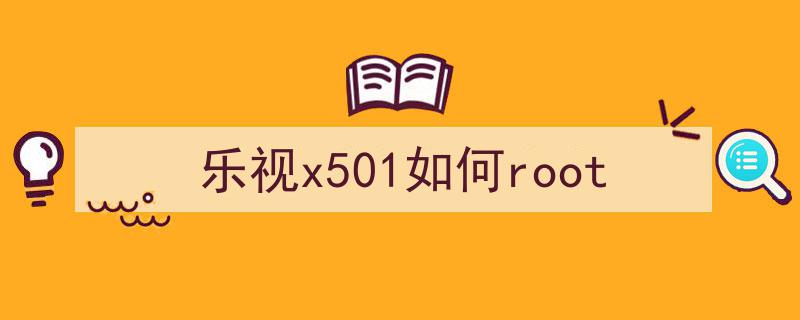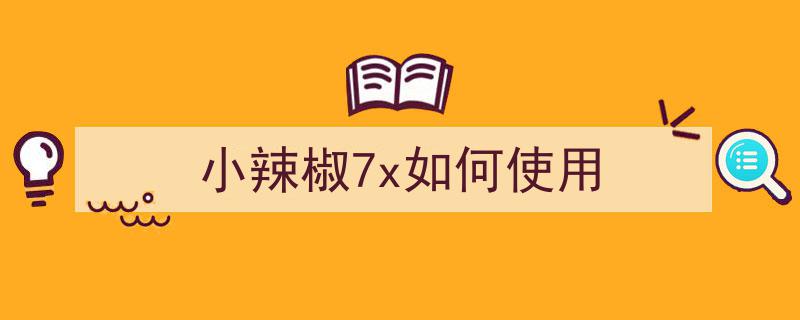
标题:【含教程】MCP今年最大更新:企业级流式HTTP功能全面上线!
正文:
尊敬的用户,
我们很高兴地宣布,MCP(My Cloud Platform)经过精心研发,今年最大的一次更新已经全面上线!此次更新重点推出了企业级流式HTTP功能,旨在为用户提供更加高效、稳定、安全的云端服务体验。以下是对此次更新的详细介绍和操作教程。
一、更新亮点
1. 企业级流式HTTP功能
- 支持大规模数据传输,满足企业级应用需求。
- 高并发处理能力,确保数据传输的稳定性。
- 实时监控与报警机制,确保系统安全可靠。
2. 优化性能
- 提升文件上传下载速度,降低延迟。
- 优化资源分配,提高系统整体性能。
3. 增强安全性
- 强化数据加密,保障用户隐私。
- 完善访问控制策略,防止未授权访问。
二、操作教程
1. 登录MCP平台
- 打开浏览器,输入MCP平台地址。
- 输入用户名和密码,登录平台。
2. 进入流式HTTP配置页面
- 在平台首页,找到“流式HTTP”模块。
- 点击进入,即可看到流式HTTP配置页面。
3. 配置流式HTTP服务
- 设置服务名称、端口号等信息。
-
相关内容:

但流式HTTP MCP服务器功能复杂,相关SDK的研发难度也很高,因此在今年的3月,MCP官方首先发布了MCP的流式HTTP通信协议,其中详细说明了HTTP流式传输的基本协议。

然后在5月9号的1.8.0版本更新中,正式在SDK中加入了HTTP流式MCP服务器的相关功能支持。自此开发者就可以通过MCP SDK,高效快速开发流式HTTP MCP服务器,并顺利进行多通道并发的企业级MCP工具部署。毫无疑问,这将是MCP技术迈向企业级应用的至关重要的一步。

本期内容,就为大家从零介绍流式HTTP MCP服务器开发、测试、部署上线的全流程,并提供完整MCP服务器功能测试客户端脚本。
一、基于HTTP流式传输的MCP服务器开发流程
- 创建项目文件:
# cd /root/autodl-tmp/MCP
uv init mcp-weather-http
cd mcp-weather-http
# 创建虚拟环境
uv venv
# 激活虚拟环境
source .venv/bin/activate
uv add mcp httpx
这里我们采用src_layer的风格进行项目文件编排,因此需要删除main.py,并创建mcp_weather_http目录。
mkdir -p ./src/mcp_weather_http
cd ./src/mcp_weather_http然后创建在src/mcp_weather_http中创建三个代码文件:

并在__init__.py中写入
from .server import main而在__main__.py中写入:
from mcp_weather_http import main
main()然后在server.py中写入如下代码:
import contextlib
import logging
import os
from collections.abc import AsyncIterator
import anyio
import click
import httpx
import mcp.types as types
from mcp.server.lowlevel import Server
from mcp.server.streamable_http_manager import StreamableHTTPSessionManager
from starlette.applications import Starlette
from starlette.routing import Mount
from starlette.types import Receive, Scope, Send
# ---------------------------------------------------------------------------
# Weather helpers
# ---------------------------------------------------------------------------
OPENWEATHER_URL = "https://api.openweathermap.org/data/2.5/weather"
DEFAULT_UNITS = "metric" # use Celsius by default
DEFAULT_LANG = "zh_cn" # Chinese descriptions
async def fetch_weather(city: str, api_key: str) -> dict:
"""Call OpenWeather API and return a simplified weather dict.
Raises:
httpx.HTTPStatusError: if the response has a non-2xx status.
"""
params = {
"q": city,
"appid": api_key,
"units": DEFAULT_UNITS,
"lang": DEFAULT_LANG,
}
async with httpx.AsyncClient(timeout=10) as client:
r = await client.get(OPENWEATHER_URL, params=params)
r.raise_for_status()
data = r.json()
# Extract a concise summary
weather_main = data
description = data
temp = data
feels_like = data
humidity = data
return {
"city": city,
"weather": weather_main,
"description": description,
"temp": f"{temp}°C",
"feels_like": f"{feels_like}°C",
"humidity": f"{humidity}%",
}
@click.command()
@click.option("--port", default=3000, help="Port to listen on for HTTP")
@click.option(
"--api-key",
envvar="OPENWEATHER_API_KEY",
required=True,
help="OpenWeather API key (or set OPENWEATHER_API_KEY env var)",
)
@click.option(
"--log-level",
default="INFO",
help="Logging level (DEBUG, INFO, WARNING, ERROR, CRITICAL)",
)
@click.option(
"--json-response",
is_flag=True,
default=False,
help="Enable JSON responses instead of SSE streams",
)
def main(port: int, api_key: str, log_level: str, json_response: bool) -> int:
"""Run an MCP weather server using Streamable HTTP transport."""
# ---------------------- Configure logging ----------------------
logging.basicConfig(
level=getattr(logging, log_level.upper()),
format="%(asctime)s - %(name)s - %(levelname)s - %(message)s",
)
logger = logging.getLogger("weather-server")
# ---------------------- Create MCP Server ----------------------
app = Server("mcp-streamable-http-weather")
# ---------------------- Tool implementation -------------------
@app.call_tool()
async def call_tool(name: str, arguments: dict) -> list:
"""Handle the 'get-weather' tool call."""
ctx = app.request_context
city = arguments.get("location")
if not city:
raise ValueError("'location' is required in arguments")
# Send an initial log message so the client sees streaming early.
await ctx.session.send_log_message(
level="info",
data=f"Fetching weather for {city}…",
logger="weather",
related_request_id=ctx.request_id,
)
try:
weather = await fetch_weather(city, api_key)
except Exception as err:
# Stream the error to the client and re-raise so MCP returns error.
await ctx.session.send_log_message(
level="error",
data=str(err),
logger="weather",
related_request_id=ctx.request_id,
)
raise
# Stream a success notification (optional)
await ctx.session.send_log_message(
level="info",
data="Weather data fetched successfully!",
logger="weather",
related_request_id=ctx.request_id,
)
# Compose human-readable summary for the final return value.
summary = (
f"{weather}:{weather},温度 {weather},"
f"体感 {weather},湿度 {weather}。"
)
return
# ---------------------- Tool registry -------------------------
@app.list_tools()
async def list_tools() -> list:
"""Expose available tools to the LLM."""
return ,
"properties": {
"location": {
"type": "string",
"description": "城市的英文名称,如 'Beijing'",
}
},
},
)
]
# ---------------------- Session manager -----------------------
session_manager = StreamableHTTPSessionManager(
app=app,
event_store=None, # 无状态;不保存历史事件
json_response=json_response,
stateless=True,
)
async def handle_streamable_http(scope: Scope, receive: Receive, send: Send) -> None: # noqa: D401,E501
await session_manager.handle_request(scope, receive, send)
# ---------------------- Lifespan Management --------------------
@contextlib.asynccontextmanager
async def lifespan(app: Starlette) -> AsyncIterator:
async with session_manager.run():
logger.info("Weather MCP server started! ")
try:
yield
finally:
logger.info("Weather MCP server shutting down…")
# ---------------------- ASGI app + Uvicorn ---------------------
starlette_app = Starlette(
debug=False,
routes=,
lifespan=lifespan,
)
import uvicorn
uvicorn.run(starlette_app, host="0.0.0.0", port=port)
return 0
if __name__ == "__main__":
main()代码解释如下:
- 引入各种功能模块
import contextlib
import logging
import os
from collections.abc import AsyncIterator
import anyio
import click
import httpx
import mcp.types as types
from mcp.server.lowlevel import Server
from mcp.server.streamable_http_manager import StreamableHTTPSessionManager
from starlette.applications import Starlette
from starlette.routing import Mount
from starlette.types import Receive, Scope, Send解释:
- 这些都是“工具箱”,你可以理解为在写一个天气小程序之前,先导入一些现成的功能组件:
- httpx: 用来联网查天气。
- mcp: 提供了让大模型调用工具的能力。
- starlette: 帮你搭建 HTTP 网络服务。
- click: 帮你写命令行参数,比如 --api-key=xxx。
- 其它模块则帮助你处理异步任务、打印日志、读取环境变量等。
- 查询天气的函数
async def fetch_weather(city: str, api_key: str) -> dict:解释:
- 这个函数是你天气服务器的核心功能——根据城市名去 OpenWeather 网站查询天气。
- 它用 httpx.AsyncClient 这个工具联网发请求,返回的结果包括:天气情况、气温、湿度等等。
- 启动服务器的主函数 main()
@click.command()
@click.option("--port", default=3000, ...)
@click.option("--api-key", envvar="OPENWEATHER_API_KEY", ...)
def main(port, api_key, ...):解释:
- 这是你运行服务器的“入口”,你以后运行时只需要:
python weather_mcp_streamable_http_server.py --port 3000 --api-key xxxx- click 是个很好用的命令行工具,帮你接收参数;
- api_key 可以通过环境变量设置,方便又安全。
- MCP工具注册:让大模型能调用 get-weather
@app.call_tool()
async def call_tool(name: str, arguments: dict):解释:
- 这就是你注册给大语言模型用的“工具”,名字叫 get-weather。
- 当模型说“我需要查北京的天气”,MCP就会触发这个函数。
- 你在里面解析出 "location" 字段,然后调用上面那个 fetch_weather() 函数拿数据。
它还有一个 亮点功能:会实时往客户端推送消息:
await ctx.session.send_log_message(...)这些就是所谓的 “流式日志通知”(比如“正在查询…”、“成功了!”)。
- MCP告诉模型有哪些工具(工具列表)
@app.list_tools()
async def list_tools() -> list:解释:
- MCP 会定期问你:“你这里都有哪些工具可以用?”
- 你就返回一个叫 get-weather 的工具描述,告诉模型:
- 输入需要一个 location,是城市名。
- 流式会话管理器配置
session_manager = StreamableHTTPSessionManager(
app=app,
event_store=None,
json_response=json_response,
stateless=True,
)解释:
- 这一句创建了 MCP 的“HTTP 会话处理中心”,负责处理所有 /mcp 路由的请求;
- stateless=True 表示不保存历史对话,每次都是新请求;
- json_response=False 表示用流式 SSE(你也可以改成一次性 JSON 响应)。
- 构建 Starlette Web 应用
starlette_app = Starlette(
routes=,
lifespan=lifespan,
)解释:
- 这是将 MCP 服务挂载到你的网站 /mcp 路径上;
- 用户访问这个路径时,就会进入刚才创建的 MCP 会话管理器。
- 启动服务器
import uvicorn
uvicorn.run(starlette_app, host="0.0.0.0", port=port)解释:
- 这行代码启动你的 MCP HTTP 服务器,监听指定端口;
- 如果你传的是 --port 3000,访问路径就是:
http://localhost:3000/mcp
同时需要回到主目录,修改项目配置文件pyproject.toml:
requires =
build-backend = "setuptools.build_meta"
name = "mcp-weather-http"
version = "1.1.0"
description = "输入OpenWeather-API-KEY,获取天气信息。"
readme = "README.md"
requires-python = ">=3.9"
dependencies =
mcp-weather-http = "mcp_weather_http:main"
package-dir = {"" = "src"}
where = 至此即完成了整个项目的代码编写工作。完整项目代码可在网盘中领取:

二、HTTP流式传输MCP服务器开启与测试
在创建完server.py后,我们可以开启服务并进行测试。需要注意的是,我们需要先开启流式HTTP MCP服务器,然后再开启Inspector:
在stdio模式下是开启Inspector时同步开启MCP Server
- 开启流式HTTP MCP服务器:
# 回到项目主目录
# cd /root/autodl-tmp/MCP/mcp-weather-http
uv run ./src/mcp_weather_http/server.py --api-key YOUR_KEY
- 开启Inspector
# 回到项目主目录
# cd /root/autodl-tmp/MCP/mcp-weather-http
# source .venv/bin/activate
npx -y @modelcontextprotocol/inspector uv run main.py --api-key YOUR_KEY
- 进行测试
- 同样,如果是使用AutoDL,则先需要使用隧道工具将端口映射到本地进行运行:

然后打开Inspector,并选择HTTP流式模式,选择默认运行地址:http://localhost:3000/mcp,然后点击connect:

然后点击List Tools:

然后点击get-weather:

然后输入地名进行测试:

若能正常返回结果,则说明服务器运行正常。

完整测试流程如下所示:
三、流式HTTP MCP服务器异地调用
接下来即可在异地环境(也可以是本地)通过HTTP方式调用MCP服务了。这里以本地安装的Cherry Studio为例,进行调用演示。此处需要保持远程流式HTTP MCP服务器处于开启状态,然后按照如下流程进行调用。
首先点击添加服务器:

然后输入服务器名称mcp-weather-http,并选择流式传输类型,并选择服务器地址:http://localhost:3000/mcp ,然后点击保存:

若显示服务器更新成功,则表示已经连接上MCP服务器:

此时后台显示如下:

然后即可进行对话测试,这里回到对话页面,选择MCP服务器,

然后进行天气查询测试:请问北京和杭州今天天气如何?,然后即可查看结果:

完整设置与调用流程演示如下:
四、流式HTTP MCP服务器发布流程
测试完成后,即可上线发布。这里仍然考虑发布到pypi平台,并使用cherry studio进行本地调用测试。完整项目代码:


- 打包上传:
# 回到项目主目录
# cd /root/autodl-tmp/MCP/mcp-weather-http
uv pip install build twine
python -m build
python -m twine upload dist/*
- 查看发布的库:https://pypi.org/search/?q=mcp-weather-http&o=

- 本地安装:
pip install mcp-weather-http

- 开启服务:uv run mcp-weather-http --api-key YOUR_API_KEY

然后即可打开浏览器输入http://localhost:3000/mcp测试连接情况

注意,这里在服务器上开启服务然后本地连接也可以,和stdio不同,HTTP模式下的MCP服务器并不需要本地运行。
- 使用Cherry studio进行连接
然后即可使用Cherry studio连接流式HTTP模式下的MCP服务器,还是和此前一样的连接流程,输入服务器名称mcp-weather-http,并选择流式传输类型,并选择服务器地址:http://localhost:3000/mcp ,然后点击保存:

若显示服务器更新成功,则表示已经连接上MCP服务器:

此时本地环境后台显示内容如下:

接下来即可进行对话测试:

至此,我们就完成了流式HTTP MCP工具的发布、下载与调用测试流程。

 微信扫一扫打赏
微信扫一扫打赏
 支付宝扫一扫打赏
支付宝扫一扫打赏


